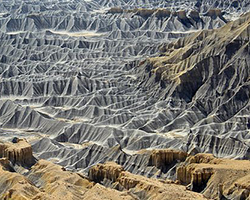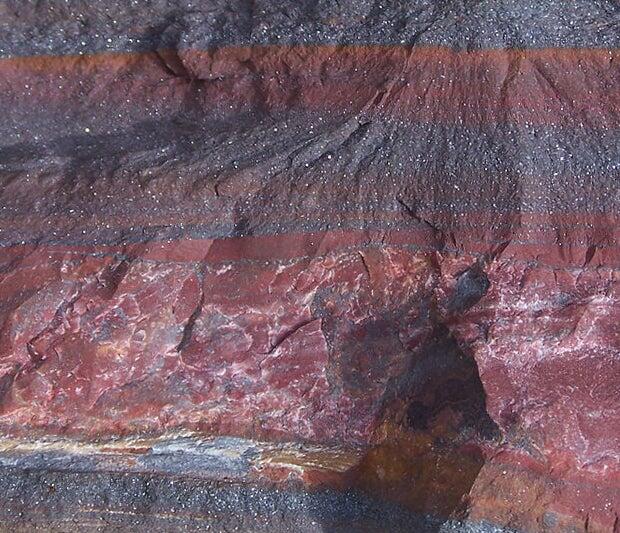
Clues to Earth’s Ancient Atmosphere
Right now, if you go outside and pick up a rock, that rock is probably at least thousands of years old, and more likely millions of years old. Rocks last a really long time, which is why geologists use them to find clues about Earth’s history. You might have seen rocks that preserve fossils, or layers of various rocks, like the Grand Canyon, which record Earth’s history. But how can we look at rocks and learn what the atmosphere used to be like?
 To learn about the ancient atmosphere, geologists find rocks formed from old sediment, like sand. Then they use chemistry to see what happened to the materials in these sedimentary rocks before they were buried. For example, some shales older than 2.5 billion years old will have small grains of pyrite (FeS2, fools gold).
To learn about the ancient atmosphere, geologists find rocks formed from old sediment, like sand. Then they use chemistry to see what happened to the materials in these sedimentary rocks before they were buried. For example, some shales older than 2.5 billion years old will have small grains of pyrite (FeS2, fools gold).
Today, pyrite grains react with oxygen and dissolve before they can ever become a part of sediments. Because of this, when we see old sediments with pyrite grains, we know the atmosphere had much less oxygen; otherwise the pyrite would have dissolved. There are also rocks called Banded Iron Formations which can only form when iron is moved to the ocean without reacting to O2 along the way. In their own way, each of these rocks hold clues about how much oxygen was in the atmosphere at the time when they were created.
Additional images via Wikimedia Commons. Banded Iron Formation image by Woudloper.

Rocks like this are called "Banded Iron Formations." They only form under certain conditions, letting us know about what the atmosphere was like when they formed.
Be Part of
Ask An Earth and
Space Scientist
By volunteering, or simply sending us feedback on the site. Scientists, teachers, writers, illustrators, and translators are all important to the program. If you are interested in helping with the website we have a volunteers page to get the process started.
